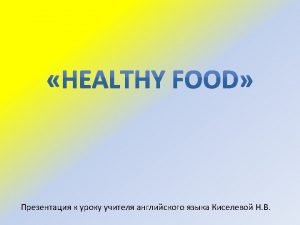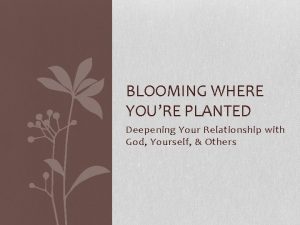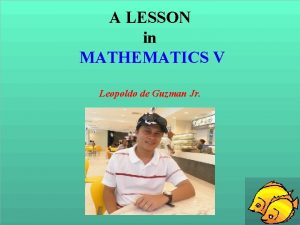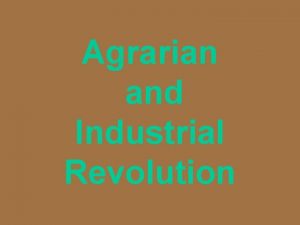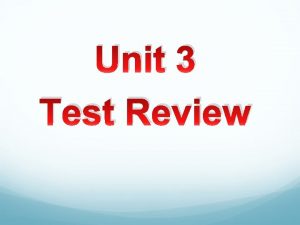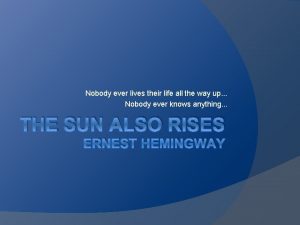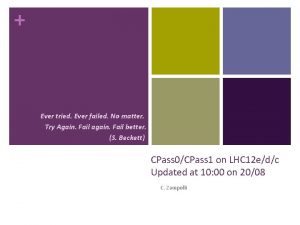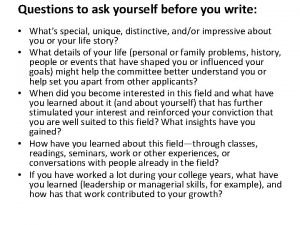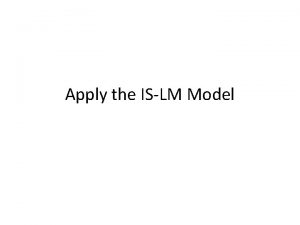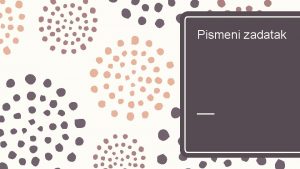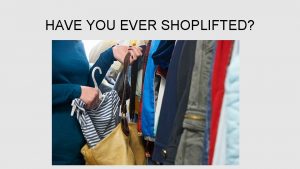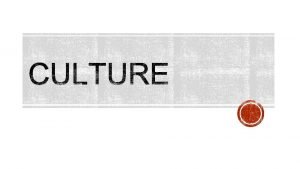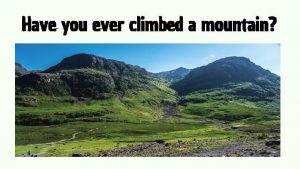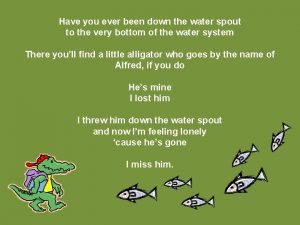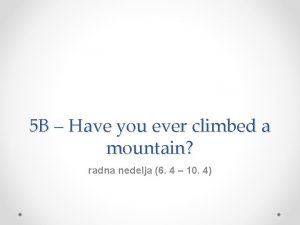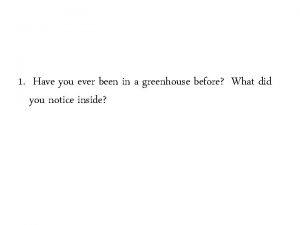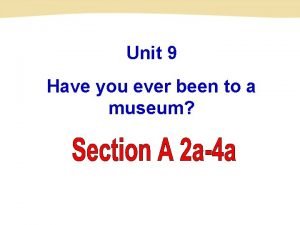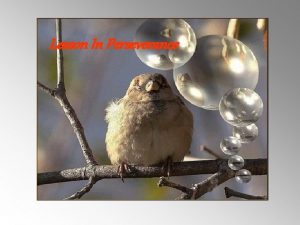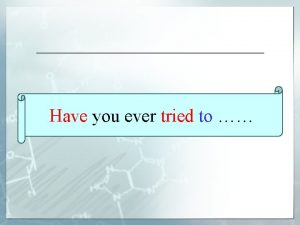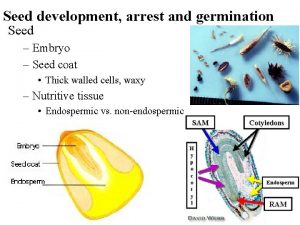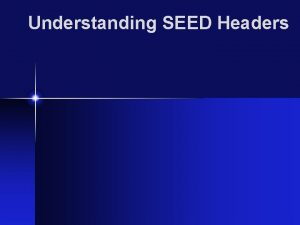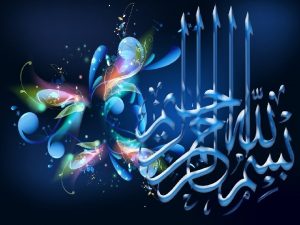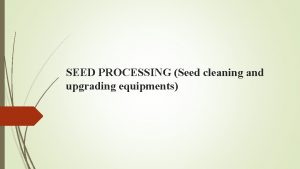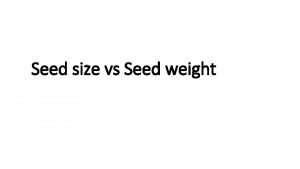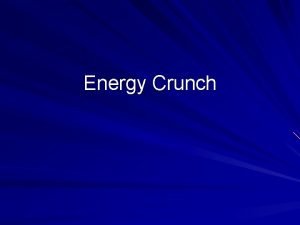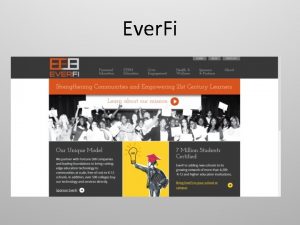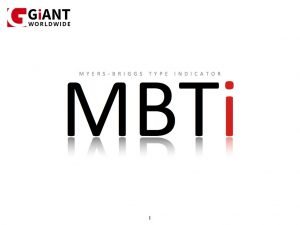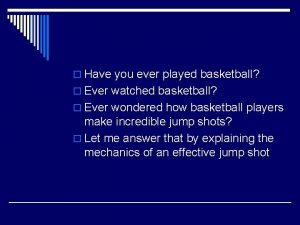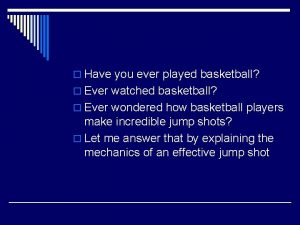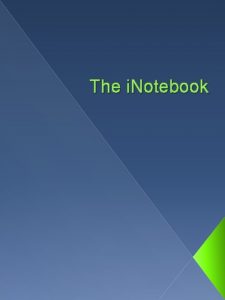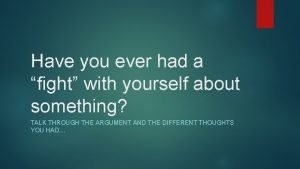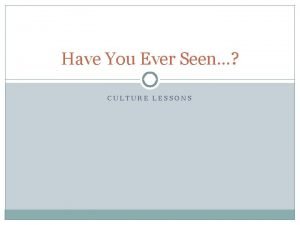Ask yourself Have you ever planted a seed






























- Slides: 30

Ask yourself…. § Have you ever planted a seed? § What was the soil like that you planted it in? § Did your plant grow?

What decided if the plant would grow? § Was the soil fertile? § Was the soil moist? § Did the seed have proper sunlight? It takes planning and consideration of all requirements for success for your goal to be achieved.

Selection for the correct composition of swine is vital to a breeding program, just like it is important to consider all factors that will allow your crop to survive.

Today we will… § Define the terms; EPD, Skeletal Soundness, Practicality, Progeny, and Longevity § Explain the use of performance data and its place in selecting breeding stock § Name the visual traits to evaluate breeding swine

Evaluating Breeding swine using progeny, data, and visual evaluation Instructor: Kyle Baker Texas A&M University

Define and Discuss § EPD: Expected Progeny Difference; the best estimate of a sire or dam’s genetic worth. It is “actual” DIFFERENCE a producer can EXPECT from future PROGENY of a Sire or Dam. § Skeletal Soundness: The evaluation of the angles to the animals joints and the fluidness of the animals movement § Practicality: The animals usefulness; is relative to soundness and performance § Progeny: The offspring of an animal § Longevity: The ability to live a long life and endure many conditions; relative to Soundness

Performance data on boars and their economic effects So now lets do some math and see which one is more economically sound.

Lets assume that all boars are normal for backfat and loin eye area, and all offspring are sold to the market @ 250 lbs with a market price of $. 85/lbs. The average daily cost of raising one pig in confinement is about $1. 00/day. *Therefore the price for 250 lbs@ $0. 85/lbs is $212. 5 Animal 1: 166 days X $1/day= $166 to raise the hog $212. 5 -166= $46. 5 Animal 2: 150 days X $1/day= $150 to raise the hog 212. 5 -150=$62. 5 Animal 3: 153 days X $1/day= $153 to raise the hog 212. 5 -153= $59. 5 Animal 4: 163 days X $1/day= $163 to raise the hog 212. 5 -163= $49. 5 Which Boar would you want on your farm? Just think if you had 100, 000 to go to market.

Visual Traits Of Evaluation § § § Skeletal Correctness Frame Capacity Muscle/Leanness Reproductive Traits

Indicators of Structural Correctness § Looseness of Skeleton § Ability of animal to be mobile with ease § § § Proper angle to scapula Backward set and relaxed knee design Correct angle to pastern Looseness of hip and hock Heaviness of Structure Even and Wide Foot Design

Evaluating Structural Correctness Desirable Skeletal Design

Evaluating Structural Correctness Desirable Skeletal Design

Evaluating Structural Correctness Undesirable Skeletal Design

Evaluating Structural Correctness Undesirable Skeletal Design

Indicators of Growth and Size § Skeletal Size and Maturity § Length of Bone § Length of Face and Neck § Length of Spine § Length of Cannon Bone § Height at top of blades § More extended growth curve and propensity to gain weight without becoming over-finished

Evaluating Growth Differences More Skeletally Extended, Longer Face, More Extended from the blades forward, Taller shouldered, Longer spined Early Maturing, Short Bodied and Compact, Low Fronted

Evaluating Capacity § § Width of Chest Depth of rib Boldness of rib Productive shape and design

Evaluating Capacity §Bigger bodied and softer look §Bolder rib and deeper flank that offers a more productive look §Wider chested §Harder look §Shallower and tighter rib design §More terminal look

Indicators of Muscle Content § § § § Forearm Blades Loin Ham-Loin Junction Hip Stifle Ham

Indicators of Muscle Content

Evaluating Muscle Differences Squarer turn to his loin edge, stouter hipped and more natural dimension thru his ham Less shapely, plain topped, flatter and less descript in his view from behind

Evaluating Muscle Differences More powerful forearm, bolder bladed, more expressive thru his stifle and lower ham More general in muscle pattern, flatter bladed, less defined thru stifle and ham

Indicators of Lean Growth § Ability to accumulate weight while remaining acceptable from a fat free lean standpoint § Leanness- 10 th Rib Backfat of 0. 7 inches § Frame size and growth potential- 270 lbs.

Indicators of Lean Growth § Leanness- absence of fat deposition § Jowl § Over blades § Elbow pocket § Loin Edge § Seam of Ham § Lower one-third of body

Evaluating Leanness Differences Leaner designed, trimmer thru jowl and elbow pocket, cleaner over blades and loin edge Heavier finished, more fat deposition thru jowl and elbow pocket, deeper flank, rounder appearance

Evaluating Reproductive Traits Desirable testical size Small, undesirable testical size v. Testical size has been know to be a direct indicator of female offspring maturity patern

Evaluating Reproductive Traits v. Vulva size is a proven indicator of the size of the reproductive tract.

Lets get in groups! § Discuss the usefulness of performance data in the selection of breeding stock § Take about 5 min § Report back to the class

So… § How did the soil at the beginning relate to breeding stock? § Fertility § It has to be practical § Choosing a field with the conditions of soil is like having an animal that is just right for breeding.

Lets Take a Quiz!
 You may ask yourself chapter 8
You may ask yourself chapter 8 Check yourself before you wreck yourself origin
Check yourself before you wreck yourself origin The triangle shirtwaist factory fire commonlit answer key
The triangle shirtwaist factory fire commonlit answer key What's your favourite dinner food
What's your favourite dinner food Pendleton feedback model
Pendleton feedback model Deepening your relationship with god
Deepening your relationship with god Roy planted a vegetable garden in his backyard
Roy planted a vegetable garden in his backyard Planted
Planted A scientist planted seeds in 4 sections
A scientist planted seeds in 4 sections Ever ancient ever new
Ever ancient ever new Clarified it
Clarified it Have you ever looked
Have you ever looked Ever tried ever failed no matter
Ever tried ever failed no matter Questions to ask yourself when writing an essay
Questions to ask yourself when writing an essay Ask yourself shorts
Ask yourself shorts Pismeni zadatak
Pismeni zadatak Have you ever wondered
Have you ever wondered Shoplifting facts and statistics
Shoplifting facts and statistics Have you ever read this book
Have you ever read this book Ya aburnee arabic
Ya aburnee arabic Have you ever climbed a mountain
Have you ever climbed a mountain Have you ever been down
Have you ever been down Have you ever ridden a camel?
Have you ever ridden a camel? Have you ever climbed a mountain?
Have you ever climbed a mountain? Have you ever been to britain
Have you ever been to britain Have you ever been to a museum
Have you ever been to a museum Have you ever watched people
Have you ever watched people Stanza in poem
Stanza in poem Have you ever been to disneyland
Have you ever been to disneyland Have you ever been to zoo
Have you ever been to zoo Arts of questioning
Arts of questioning



